HATECO TAKES PROACTIVE MEASURES AGAINST STORM WIPHA: COMPREHENSIVE PREPAREDNESS, MAXIMUM SAFETY ENSURED
Amid the complex developments and wide-reaching impact of Typhoon Wipha (Storm No. 3), Hateco Group promptly activated a comprehensive storm response plan across its entire ecosystem—from Hateco International Container Terminal (HHIT) to ongoing real estate projects—adhering firmly to its guiding principle: “Safety is the highest priority.”
Emergency Response at Hateco International Container Terminal (HHIT)
Starting as early as July 20, 2025, the Hateco International Container Terminal (HHIT) swiftly mobilized and deployed a full-scale, synchronized storm preparedness protocol across all critical operational zones—including quayside areas, container yards, entry checkpoints, power substations, and administrative control centers. This comprehensive mobilization reflects not only technical readiness but also the enterprise’s steadfast commitment to operational resilience in the face of extreme weather events.
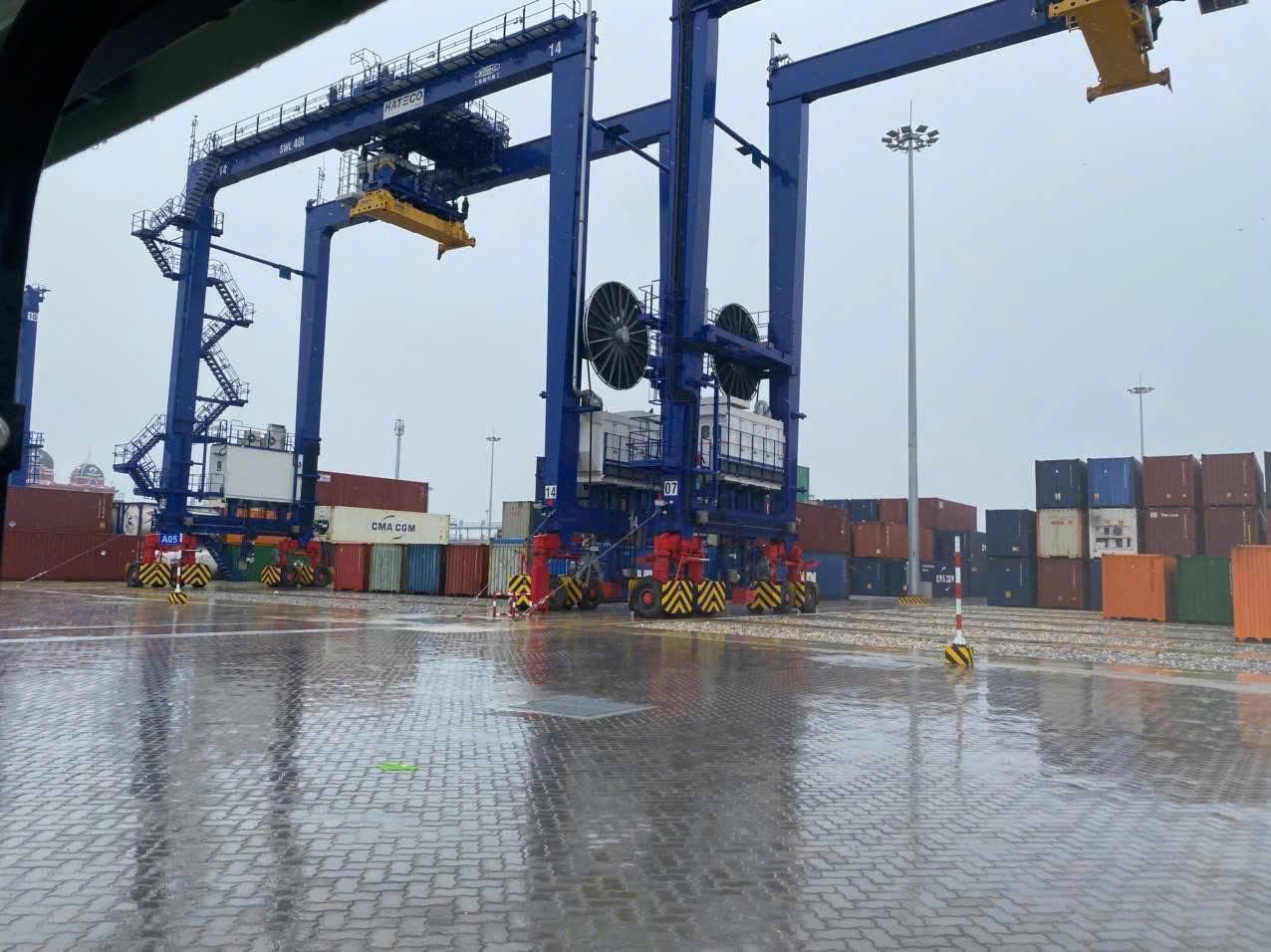 All RTG yard cranes at Hateco Terminal were repositioned to designated fixed points and securely anchored in advance of the storm’s landfall.
All RTG yard cranes at Hateco Terminal were repositioned to designated fixed points and securely anchored in advance of the storm’s landfall.
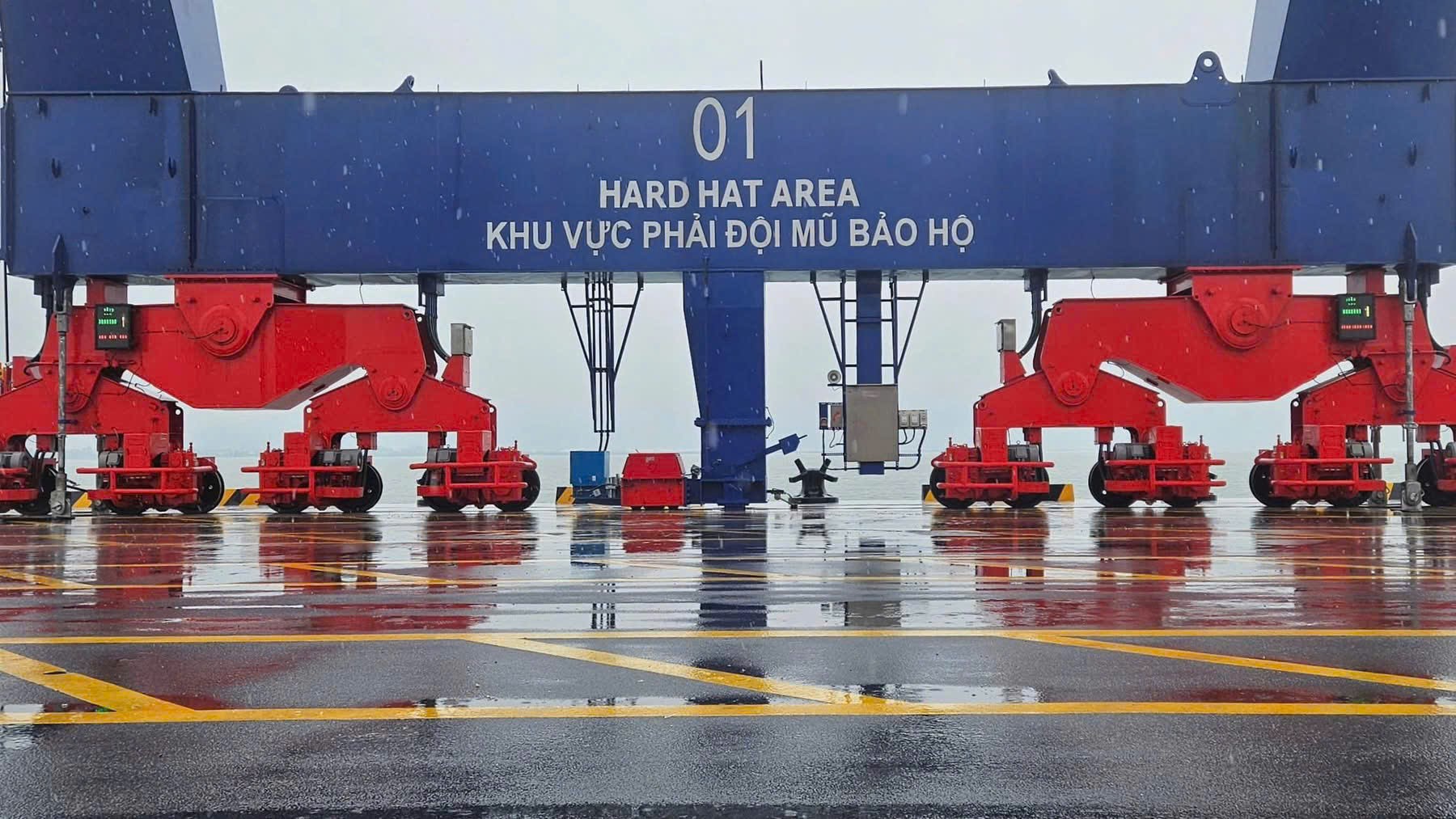 The STS quay crane bases at the wharf area were firmly locked and reinforced, ensuring structural stability against high winds and heavy rainfall. Securing critical equipment into storm-safe configuration formed a pivotal component of Hateco Terminal’s early and decisive typhoon preparedness plan.
The STS quay crane bases at the wharf area were firmly locked and reinforced, ensuring structural stability against high winds and heavy rainfall. Securing critical equipment into storm-safe configuration formed a pivotal component of Hateco Terminal’s early and decisive typhoon preparedness plan.
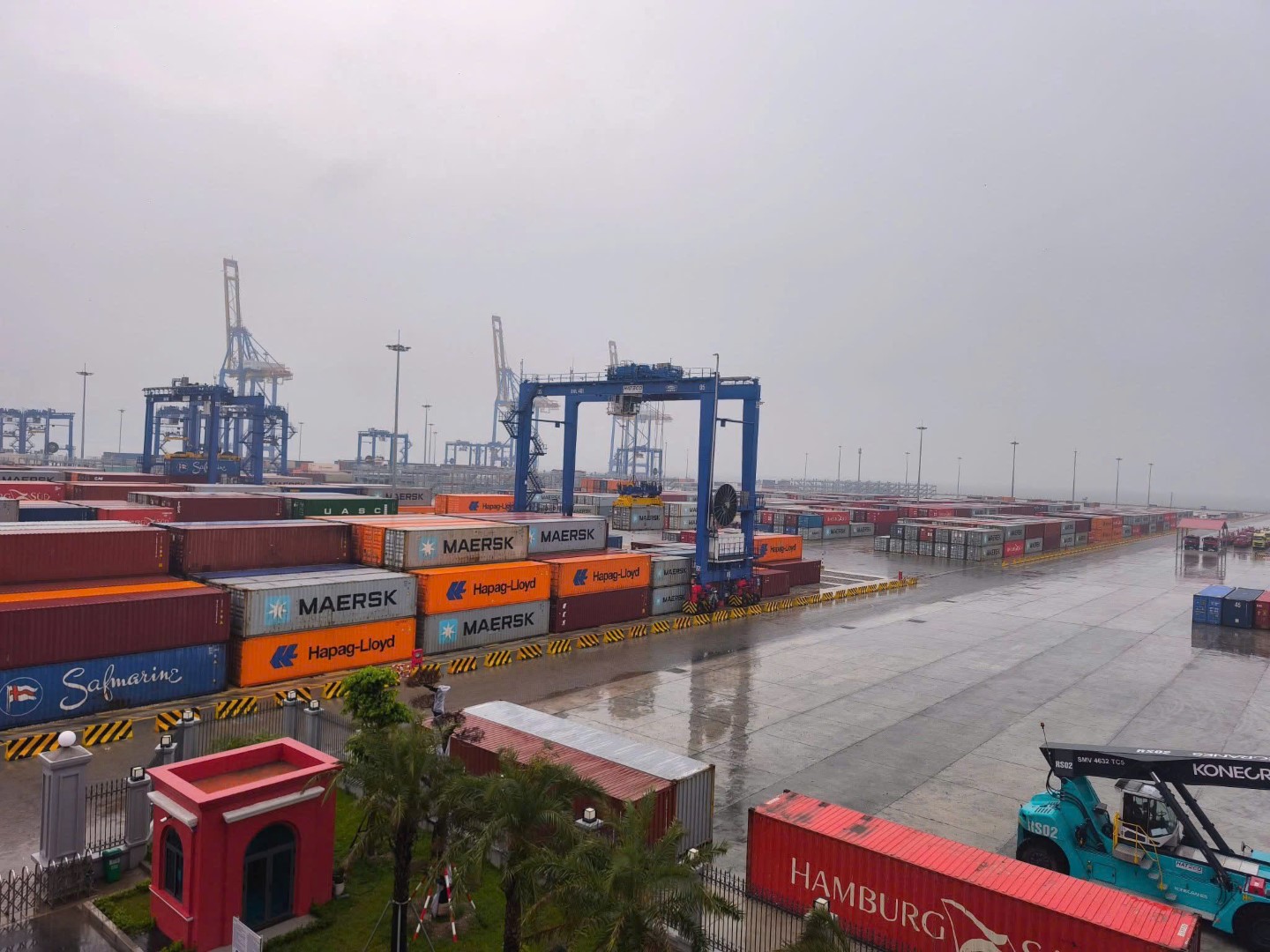 The container yard was orderly reorganized, with container stacks lowered and critical equipment securely anchored. Storm preparedness efforts were executed uniformly across all operational zones to ensure maximum safety and risk mitigation.
The container yard was orderly reorganized, with container stacks lowered and critical equipment securely anchored. Storm preparedness efforts were executed uniformly across all operational zones to ensure maximum safety and risk mitigation.
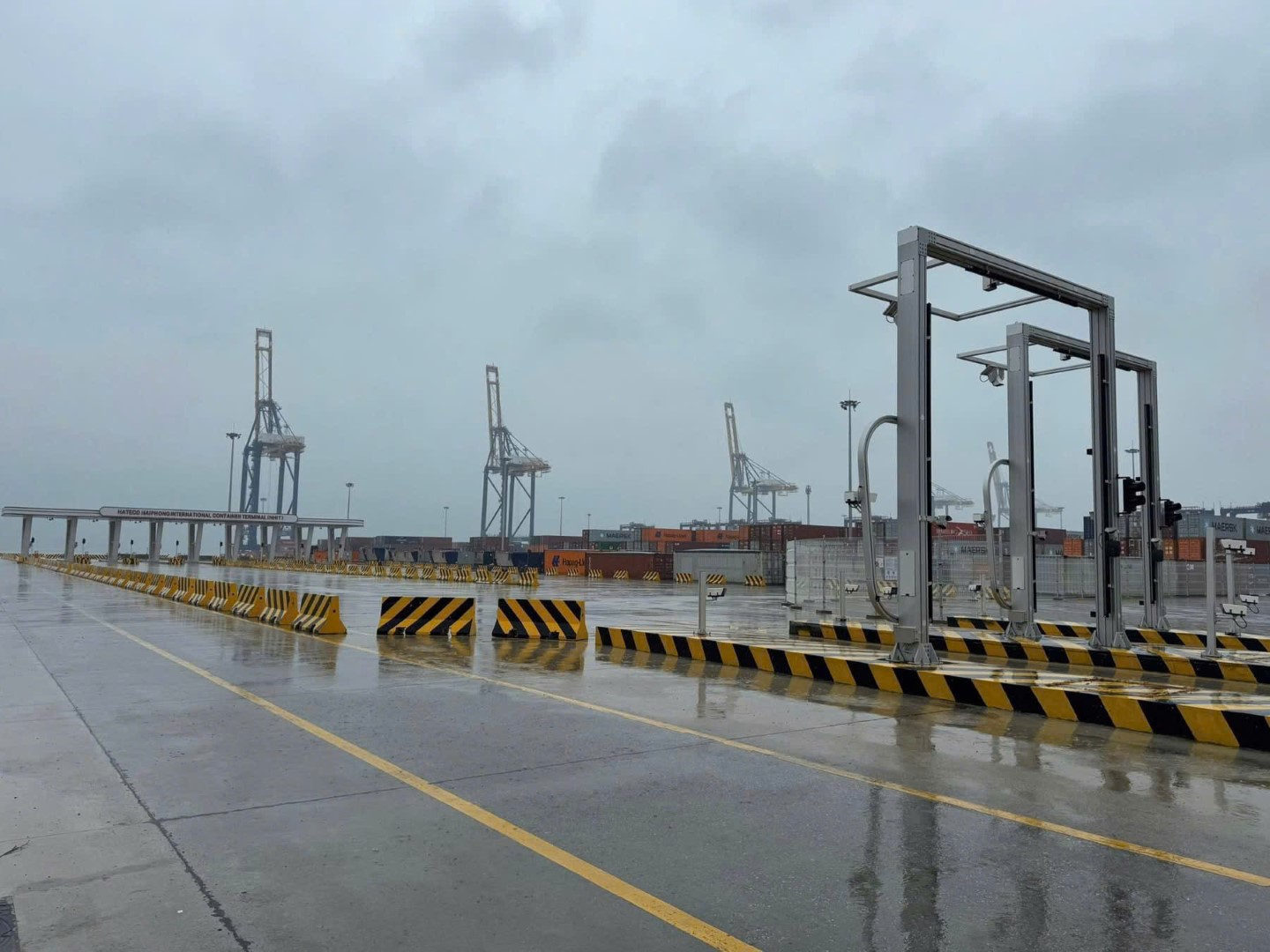 Access control at Hateco Terminal’s entry gate was significantly reinforced, with all equipment—including container scanning systems, security barriers, and surveillance cameras—thoroughly inspected and switched to storm-ready status. These measures ensured uninterrupted operational safety under extreme weather conditions.
Access control at Hateco Terminal’s entry gate was significantly reinforced, with all equipment—including container scanning systems, security barriers, and surveillance cameras—thoroughly inspected and switched to storm-ready status. These measures ensured uninterrupted operational safety under extreme weather conditions.
In a decisive move to protect personnel and property, HHIT enforced a full suspension of inbound vehicle access beginning July 21, 2025, pending the stabilization of weather conditions.
On July 20–21, 2025, HHIT had the honor of receiving a high-level delegation, including Mr. Lê Tiến Châu – Member of the Central Party Committee and Secretary of the Hải Phòng City Party Committee, and Mr. Nguyễn Xuân Sang – Deputy Minister of Construction – who visited the terminal to conduct a comprehensive field inspection of its typhoon readiness. Undeterred by heavy rainfall, the delegation proceeded with an on-site assessment at the quay, directly acknowledging the scope and depth of HHIT’s storm preparedness measures.
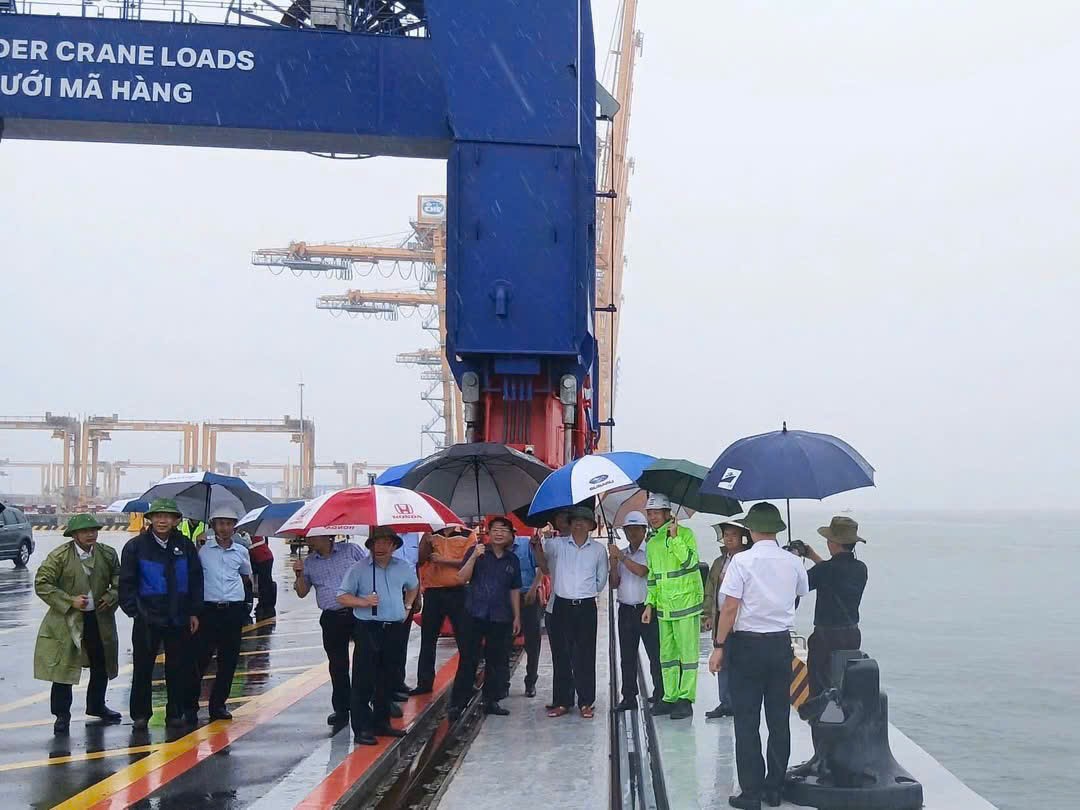 Under the heavy rain, the inspection delegation—led by Mr. Lê Tiến Châu, Secretary of the Hải Phòng City Party Committee, and Mr. Nguyễn Xuân Sang, Deputy Minister of Construction—arrived at the Hateco Terminal quay to conduct a firsthand assessment of storm preparedness and on-site contingency planning.
Under the heavy rain, the inspection delegation—led by Mr. Lê Tiến Châu, Secretary of the Hải Phòng City Party Committee, and Mr. Nguyễn Xuân Sang, Deputy Minister of Construction—arrived at the Hateco Terminal quay to conduct a firsthand assessment of storm preparedness and on-site contingency planning.
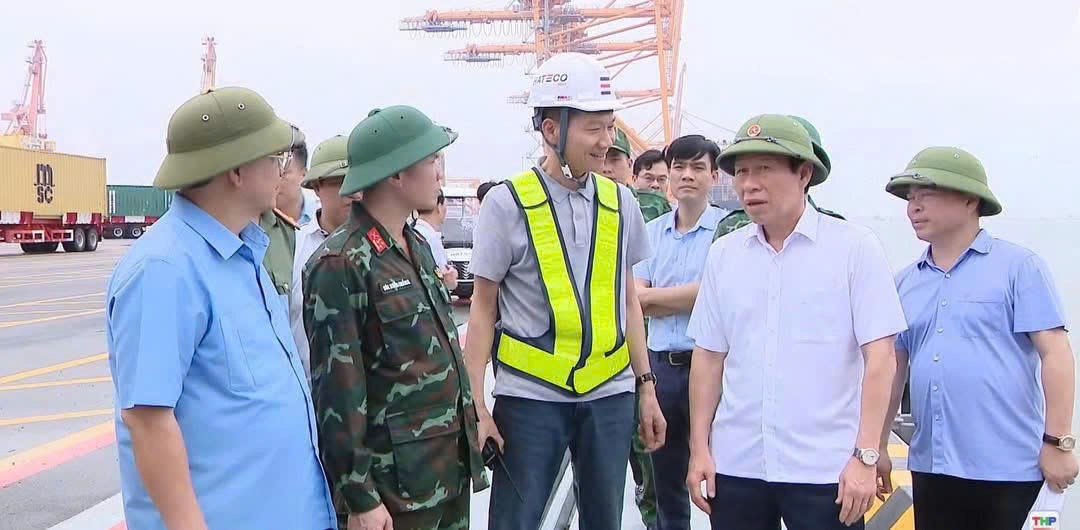 Central Goverment and Hai Phong municipal leaders acknowledged Hateco Terminal’s proactive stance, prompt mobilization, and methodical execution of disaster preparedness—fully aligned with Vietnam’s “Four on the spot” strategy for localized emergency response.
Central Goverment and Hai Phong municipal leaders acknowledged Hateco Terminal’s proactive stance, prompt mobilization, and methodical execution of disaster preparedness—fully aligned with Vietnam’s “Four on the spot” strategy for localized emergency response.
During the working session, both central and municipal leaders highly commended HHIT for its proactive, methodical, and disciplined execution of the national “Four on Site” strategy comprising on-site command, on-site forces, on-site logistics, and on-site equipment. The response framework was lauded as timely, comprehensive, and operationally sound, effectively ensuring the highest level of safety for personnel, cargo, and critical infrastructure assets.
Proactive Response – Stable Operations” at Hateco Industrial Parks
At Bac Tien Phong Industrial Park in Quang Ninh, Hateco’s commitment to “Proactive Response – Stable Operations” was operationalized through a cohesive emergency framework and brought to life through a unified set of proactive and resolute actions. As Typhoon Wipha approached, the Industrial Park Management Board swiftly activated a high-alert contingency plan that mobilized every tier of its operational system.
- Contractors were not merely instructed—they were strategically mobilized to reinforce all ongoing construction zones, secure scaffolding and overhead structures, and systematically remove vulnerable materials from open-air sites. Key infrastructure components ranging from storage depots and internal roadways to electrical hubs were re-evaluated and strengthened to absorb the anticipated impact.
- In parallel, emergency response units including rescue operatives, technical personnel, and medical responders were placed on sustained high alert. Equipment reserves, fuel stockpiles, and mobile backup systems were not only deployed, but strategically pre-positioned to ensure autonomous operational capacity under extended disruption scenarios..
- Environmental controls were swiftly activated: sanitation crews cleared debris, stabilized drainage paths, and fortified flood-prone zones. Preventive inspections of all critical systems—electrical panels, fire suppression networks, and standby generators were executed with precision, aimed at eliminating failure points before the storm could expose them.
- Tenant companies operating within the park were advised to mirror these measures internally and maintain continuous liaison with central management. Unified communication protocols were implemented, ensuring synchronized actions and seamless escalation—should contingency demands arise.
- This was not a crisis reaction, it was systemized foresight. Every action reflected a governance culture in which preparedness is not a one-time response, but a built-in imperative.
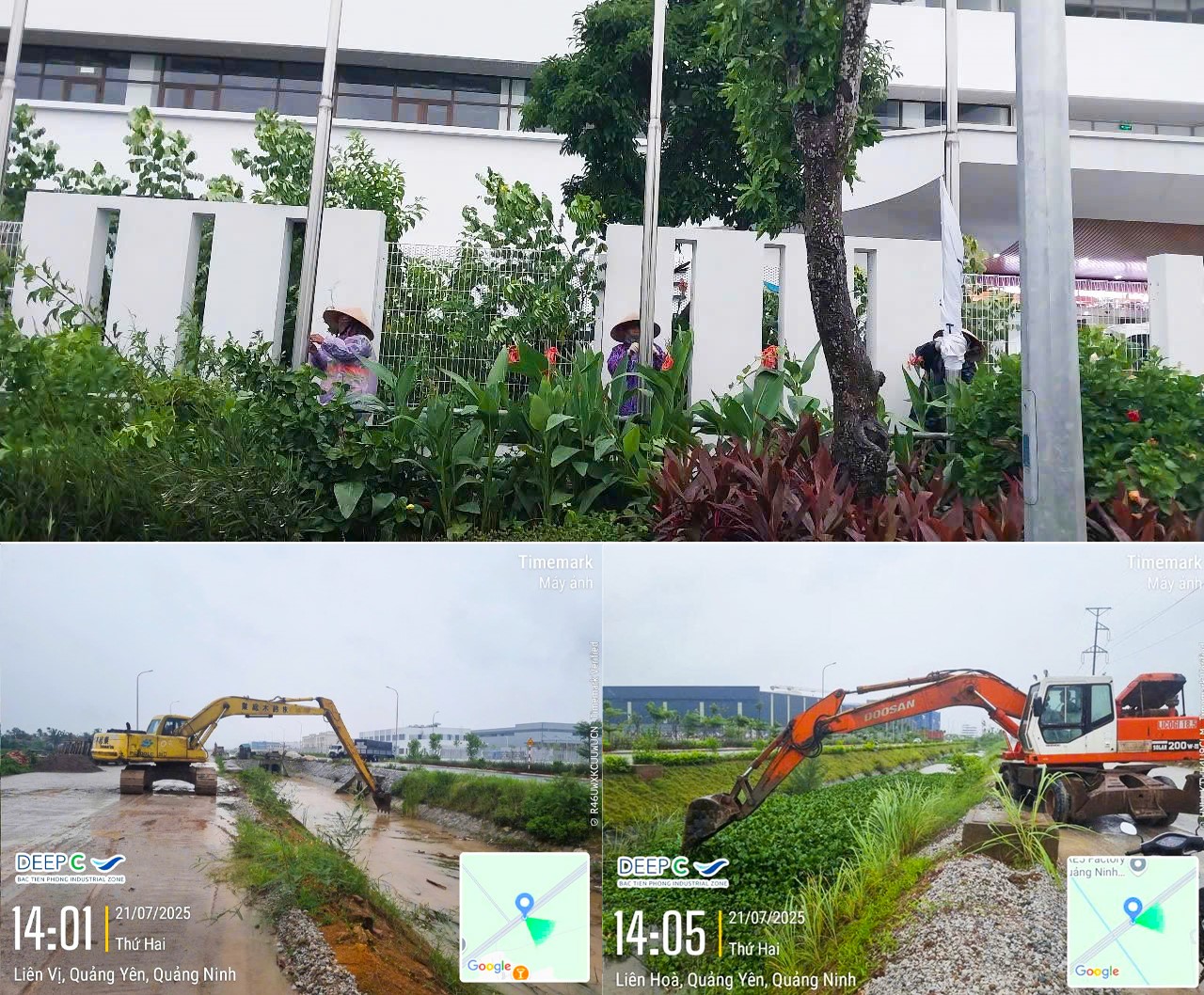
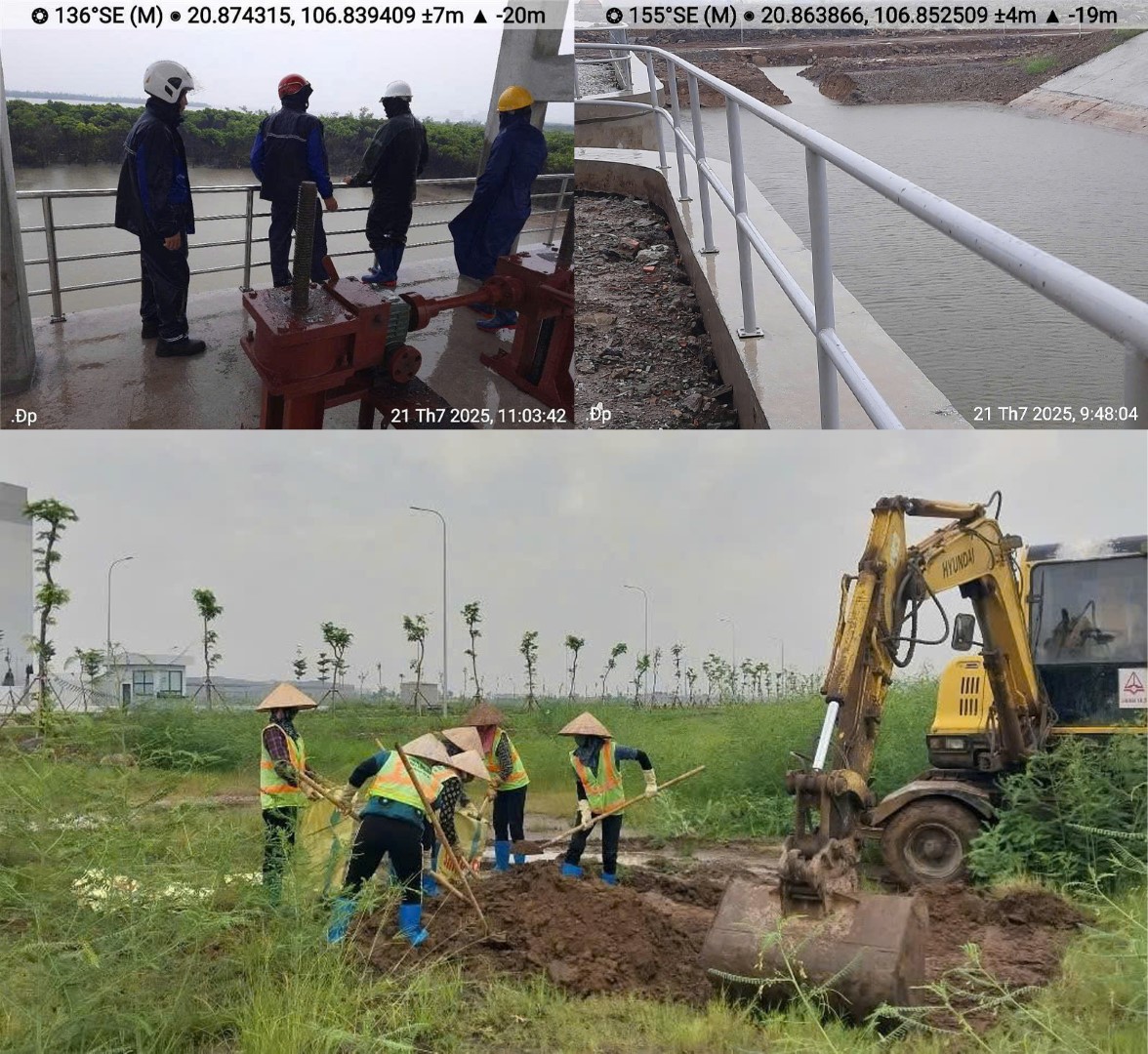 Hateco’s industrial zones initiated full-scale response operations with strong coordination and infrastructural fortification across all divisions.
Hateco’s industrial zones initiated full-scale response operations with strong coordination and infrastructural fortification across all divisions.
What Hateco executed at Bac Tien Phong industrial park set a benchmark that echoed across its entire industrial portfolio, a decisive manifestation of the Group’s enterprise-wide resilience, operational integrity, and unwavering control under pressure. From Bac Tien Phong outward, Hateco’s industrial park response was premeditated and scaled. It speaks to a governance mindset where resilience is not improvised, but institutionalized.
Comprehensive Storm Response Deployed Across Hateco’s Real Estate Projects
Storm preparedness at Hateco was not confined to the seaport. In alignment with a unified operational doctrine, the Group’s real estate division launched a simultaneous, high-alert storm response across all active developments—ensuring the utmost safety for residents, commercial partners, and entire project zones.
From large-scale urban complexes such as Hateco Hoang Mai, Hateco Laroma, Hateco Apollo, to integrated communities like Hateco Green City and Hateco Green Park, contingency protocols were escalated to emergency status. The activation was not procedural—it was a manifestation of institutional readiness grounded in a clear, unwavering ethos:
“Proactive – Decisive – For Community Safety.”
Each residential project under Hateco became a focused extension of the Group’s overall preparedness system—coordinated, responsive, and driven by a shared priority: to stay ahead of the storm, minimize risks, and protect every resident and facility from disruption.
To turn this principle into practice, each site implemented a clear set of timely and well-organized actions:
- Emergency notices and clear action guidelines were quickly delivered to all residents, commercial tenants, and service partners ensuring everyone stayed informed, aligned, and ready to act with consistency and speed.
- Residents were urged to take immediate safety precautions inside their apartments and common areas: reinforcing windows and balcony doors, closing all openings tightly, and unplugging unused electrical devices to prevent short circuits or fire hazards.
- Technical teams remained on duty around the clock. Each facilities team carried out thorough inspections of essential systems—electricity, water supply, firefighting equipment, elevators, backup generators, and drainage pumps—making sure the entire building was fully prepared to operate safely throughout the storm.
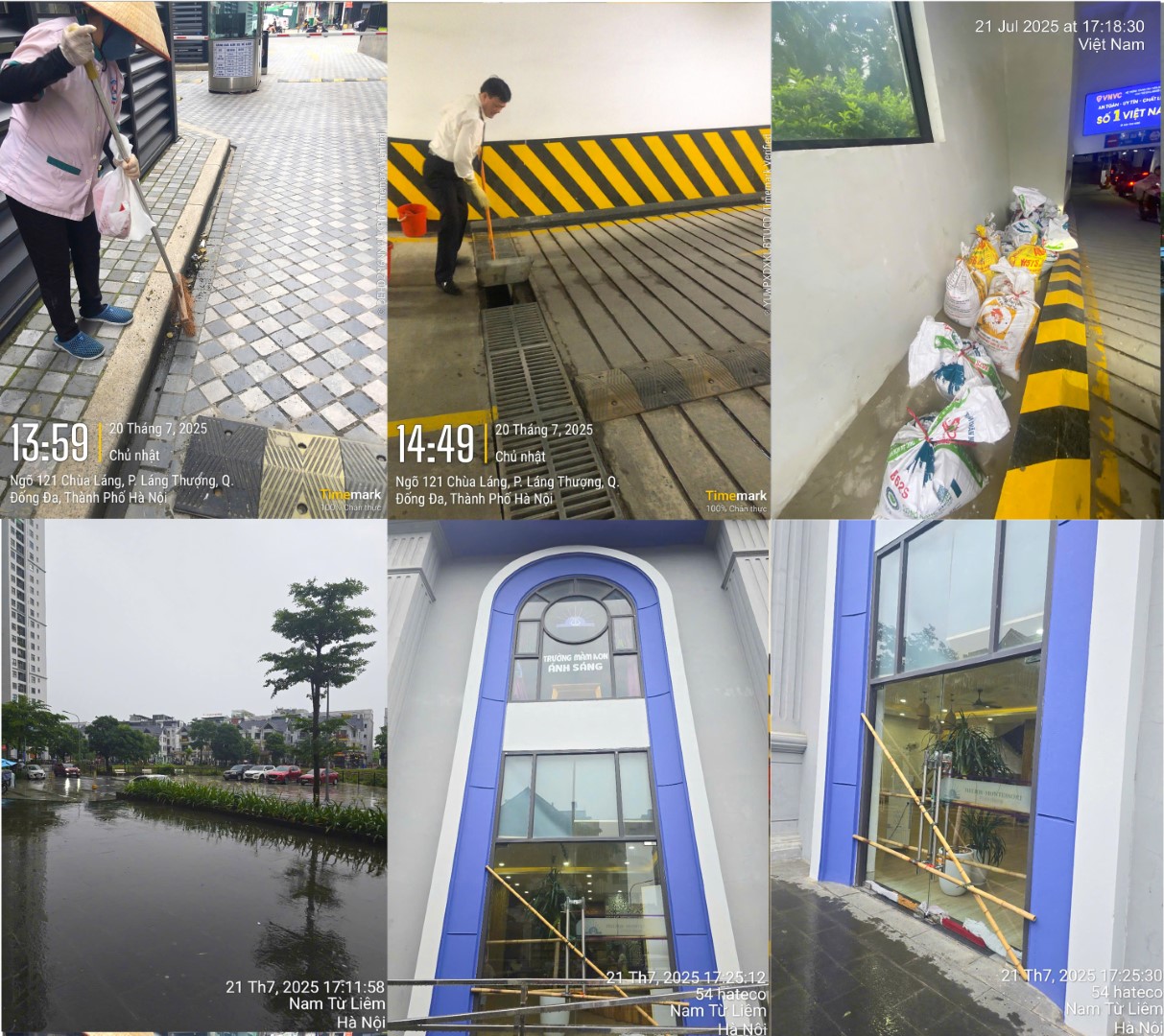 At each project site, storm contingency plans were escalated to emergency status, guided by a unified principle: “Proactive – Decisive – For Community Safety.”
At each project site, storm contingency plans were escalated to emergency status, guided by a unified principle: “Proactive – Decisive – For Community Safety.”
Proactive risk management coupled with close coordination between property management teams, technical crews, and residents enabled Hateco’s projects to maintain stable operations, minimize potential damage, and ensure comprehensive safety throughout the storm period.
Through proactive risk control and strong coordination between management teams, engineers, and residents, Hateco’s properties maintained stable operations and minimized losses during the storm.
Hateco’s response to climate volatility is neither improvised nor reactive. It reflects a governance mindset in which preparedness is institutionalized not as an exception, but as an operating standard.From strategic command to on-the-ground execution, every unit within the Group acts under a shared operational ethic: to anticipate risks, uphold continuity, and safeguard public trust. In a landscape defined by uncertainty, resilience is not a virtue, it is a prerequisite of leadership.



 No. 1 Huynh Tan Phat, Sai Dong B Industrial Park, Long Bien Ward, Hanoi City, Vietnam
No. 1 Huynh Tan Phat, Sai Dong B Industrial Park, Long Bien Ward, Hanoi City, Vietnam Phone:
Phone: Email:
Email: